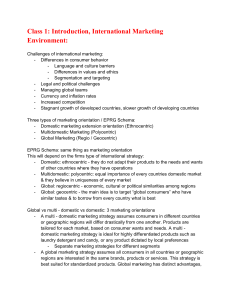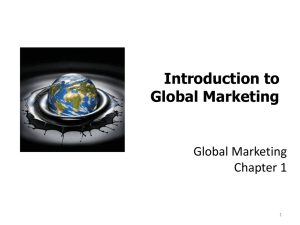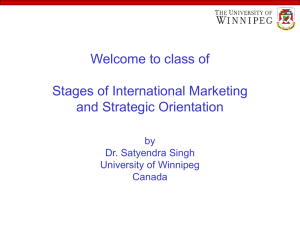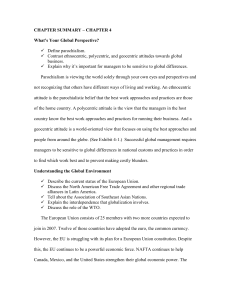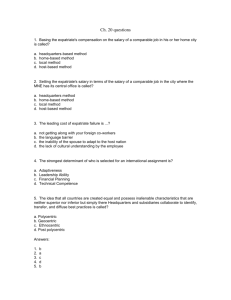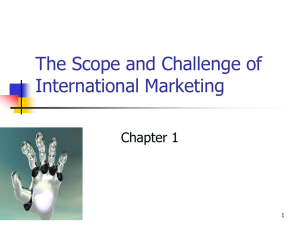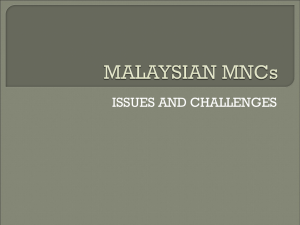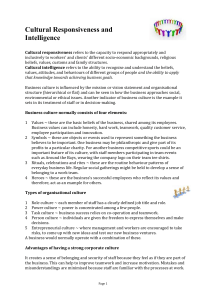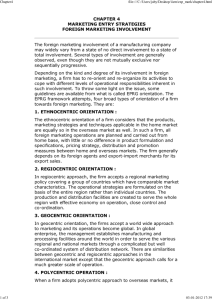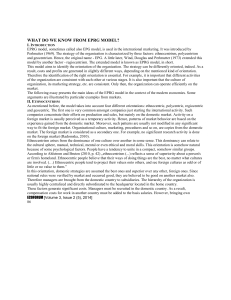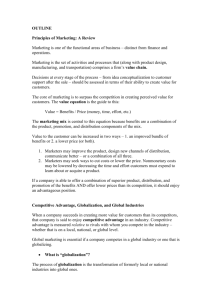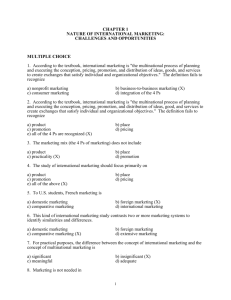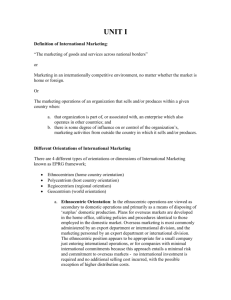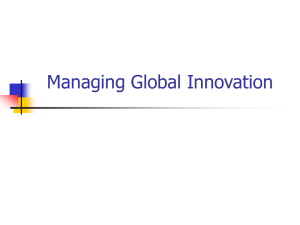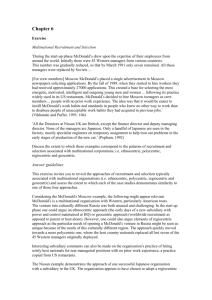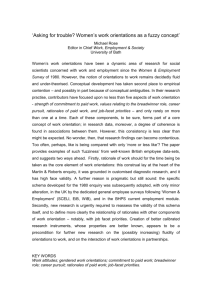Management orientations
advertisement
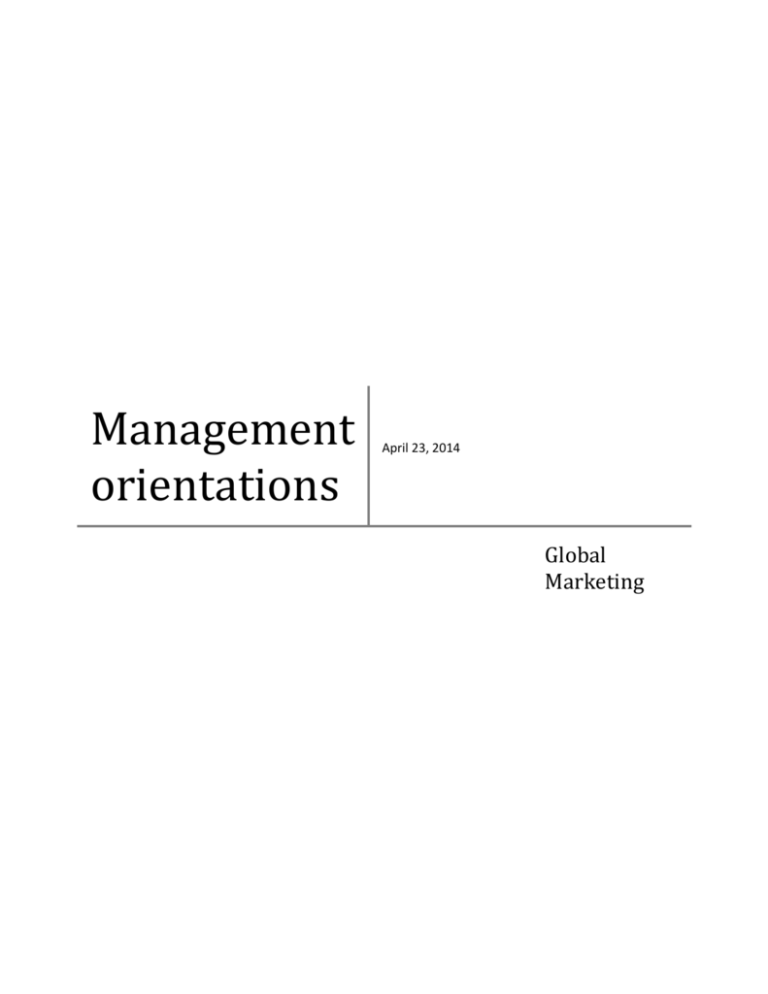
Management orientations April 23, 2014 Global Marketing Management orientations 1 Companies are governed by management styles. The products, types of promotion and general direction of a company, are dictated by its policies and mission statement, but only in the way that it is carried out by its management. The managers of a company relay an overall mindset that can be ethnocentric, polycentric, regiocentric or geocentric in orientation. This framework will influence the decisions that the company makes globally. An ethnocentric managerial mindset believes in the superiority of products from the home market. A manger of this type will show bias against foreign markets, and business opportunities that exist outside the company’s country of origin. These businesses will use a standardization approach to globalization and try to push the product or service as it exists in the domestic market. Because of this home market reliance, companies who choose to work in this manner are called “domestic companies” or “international companies” when they do business abroad. Their foreign markets are secondary and are usually run by a central headquarters stationed in the home country. Managerial directives are sent out from there and followed in all other markets. Japanese car maker, Nissan tried to push a car more tailored to Japanese winters, to a midwestern, harsh, American winter driver, with poor results. The company found that people preferred cars that did not need special care to deal with the climate in America, as car owners in Japan did with Nissan automobiles. The marketing effort turned out to be a failure. Polycentric companies are the opposite of ethnocentric ones. These companies rely on the uniqueness of each market to provide innovations that can be exploited locally or in other regions. Business such as these, use an adaptation approach to marketing. They use local management to adapt the product/service to fit the needs of local markets. If innovations are created, they make use of those techniques in similar markets across the globe. These companies Management orientations 2 are called, “multi-nationals”. They use a de-centralized management approach, where local headquarters develop the strategies needed to operate in the immediate market. The Worldwide consumer goods company Unilever, at one time, maintained 48 different formula variations and 30 different package designs for a deodorant brand they sold throughout the World. That is an example of using a polycentric approach. Research in each of the markets suggested that specific changes to the product increased sales in that market. So as a responsive polycentric company, Unilever responded with the numerous variations on their Rexona deodorant. Regio-centric companies tend to make their management decisions based on geo-political agreements that affect trade policies. Special trade agreements like the North American Free Trade Agreement between The U.S., Mexico and Canada (NAFTA) provide certain incentives for automotive companies like General Motors to take advantage of. Companies which base their decisions on this type of approach tailor their marketing to adapt to conditions favored by whatever policies exist at the time. These policies may relate to tariffs or regulations like how many hours a worker can work per day, or if union representation is allowed in factories. Companies can alter their business strategy to accommodate opportunities because of these policies. Geocentric companies take the polycentric model one step further. Their goal is to make business decisions with all of the global markets taken into consideration. When judging the viability of a strategy, they will consider factors from different regions in the World. For hiring, product rollout, manufacturing, research and development etc., these “transnational” companies will refer to their global resources, blurring the lines of nationality. Companies can use a central headquarters located in the home country, like Harley-Davidson, and send out product to its global distribution Management orientations 3 chain. Other transnationals like the GAP, outsource its supply chain to low-wage countries around the World and ship back into its home country. This strategy allows the GAP to capitalize on cheap labor abroad in contrast to what they could do in their home country, the U.S. Reference Warren Keegan, Global Marketing, 7th ed., Pearson 2013

